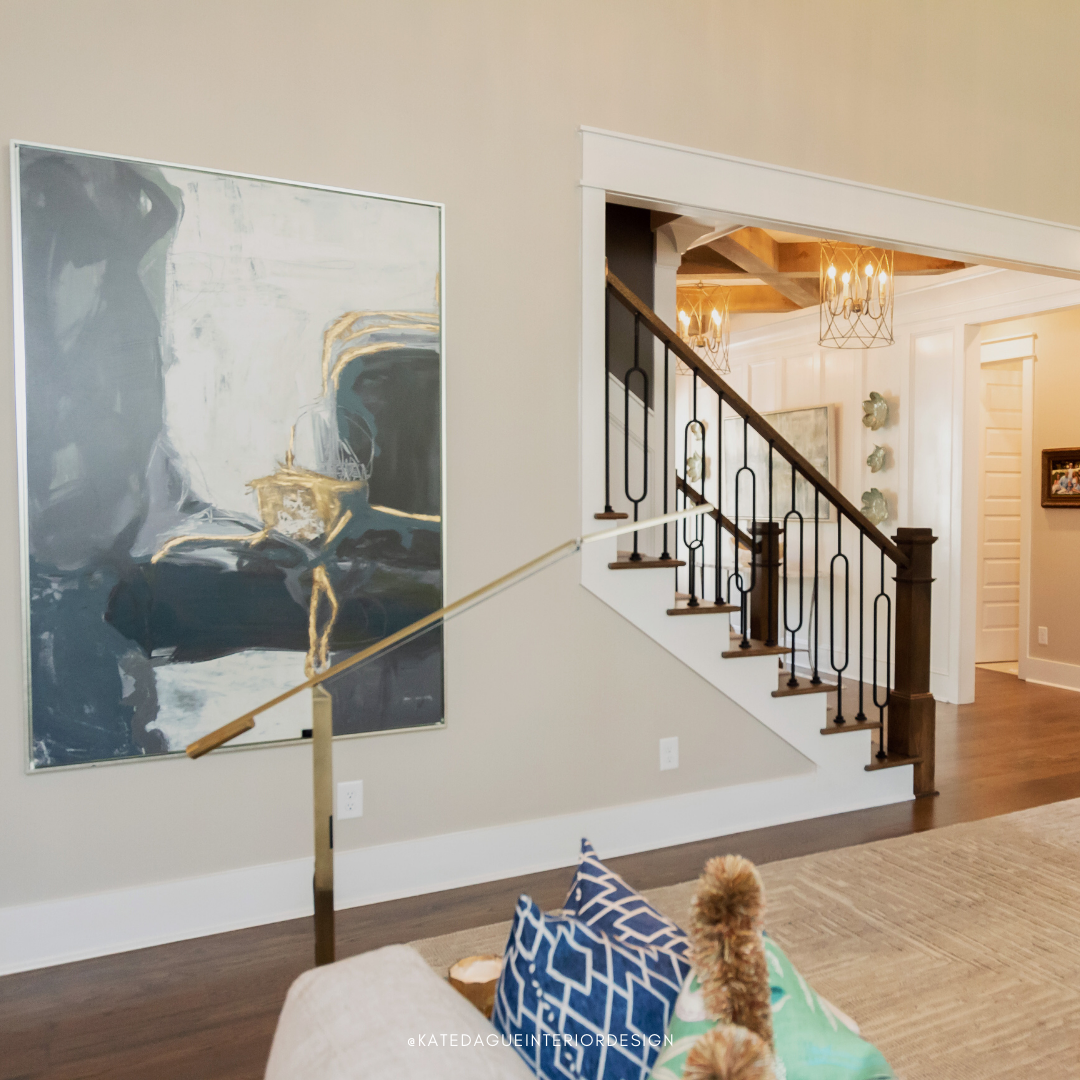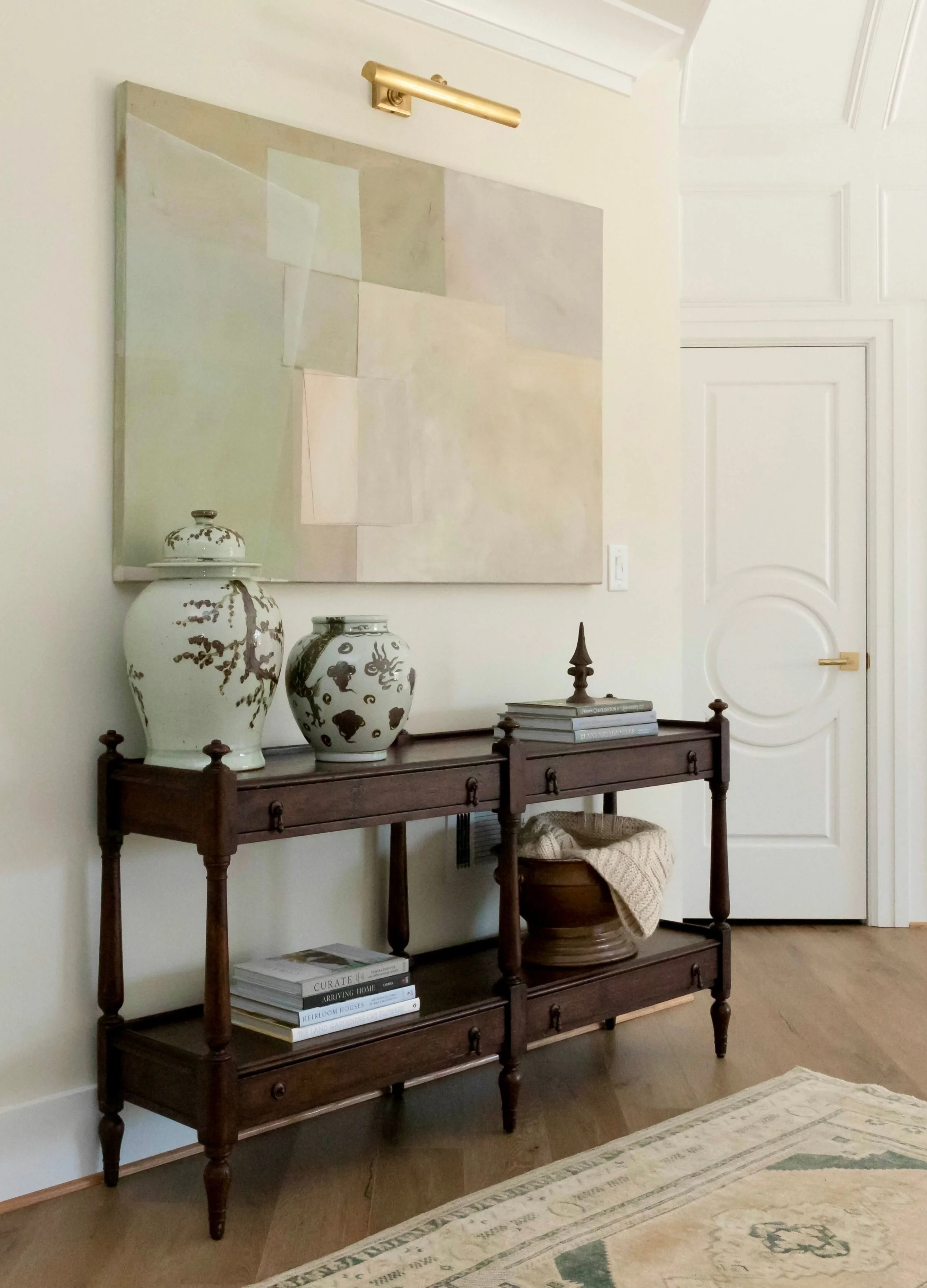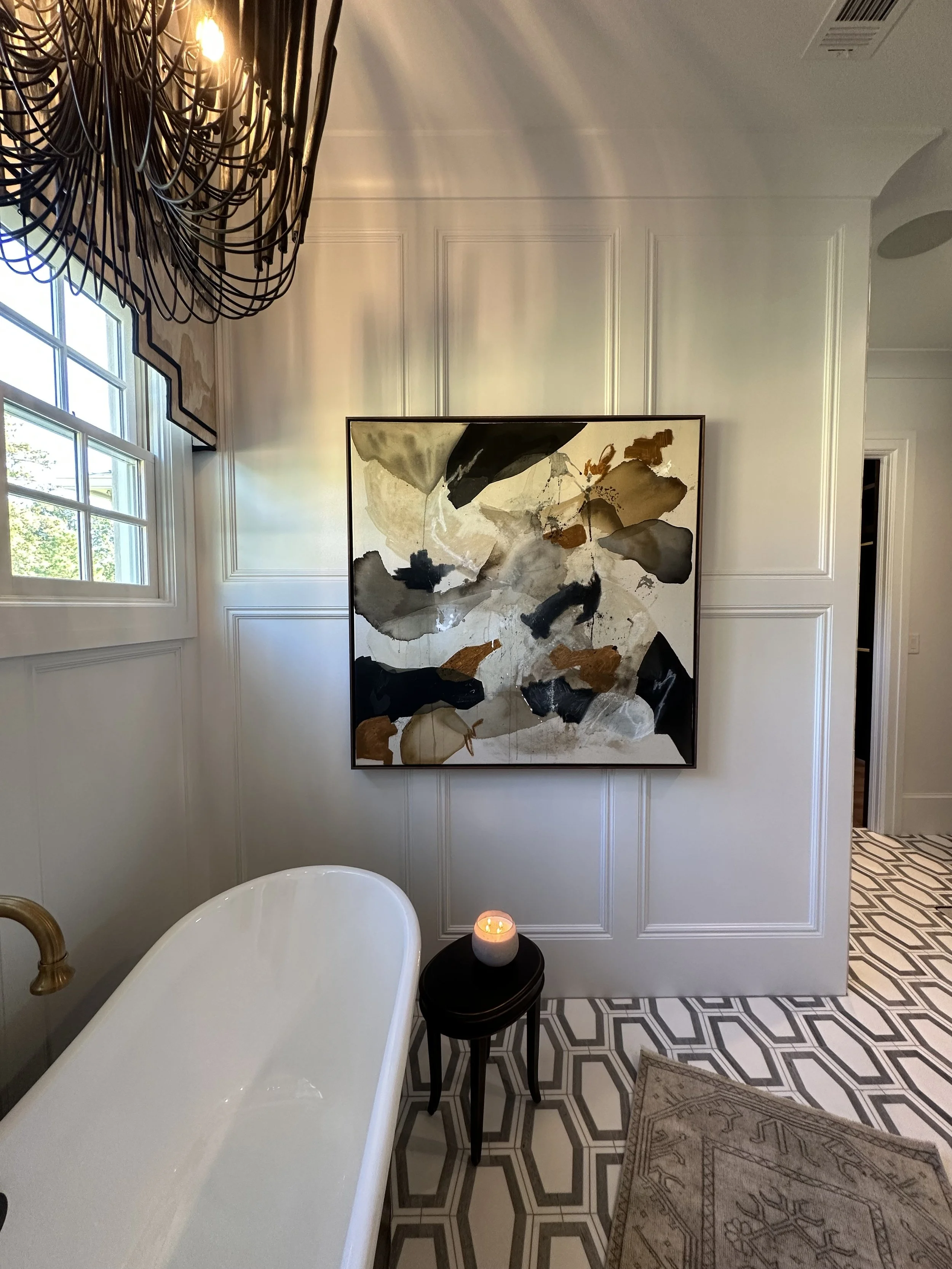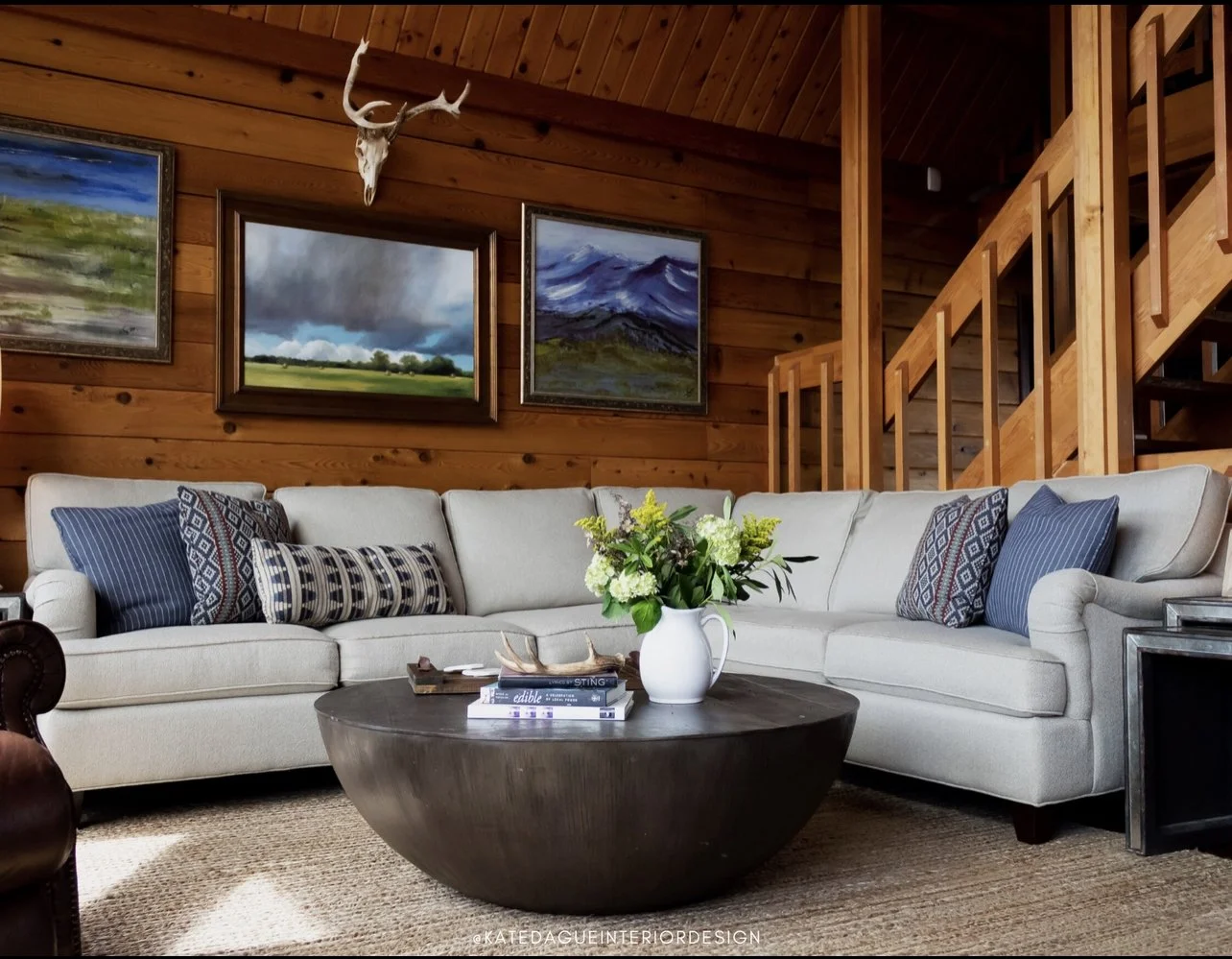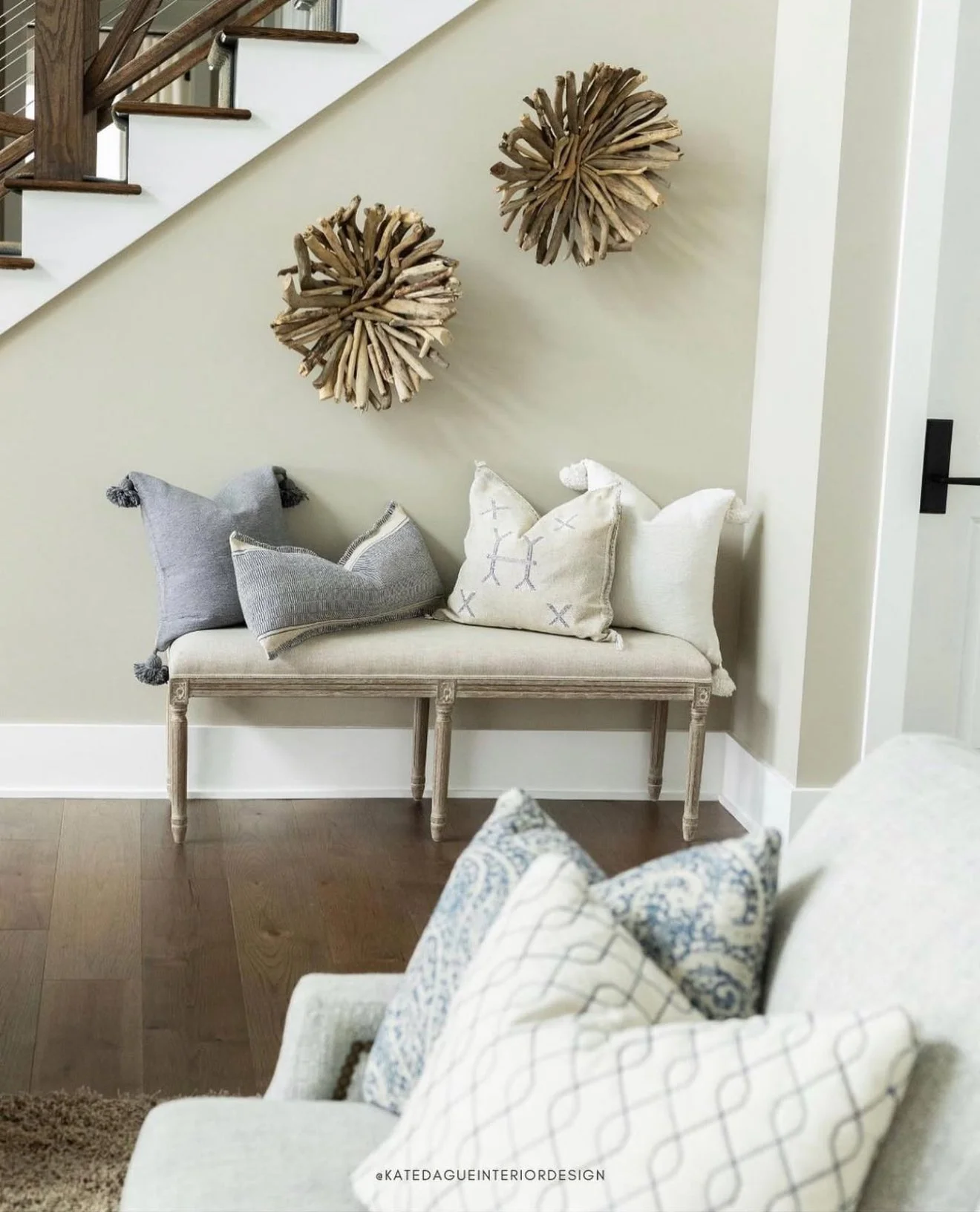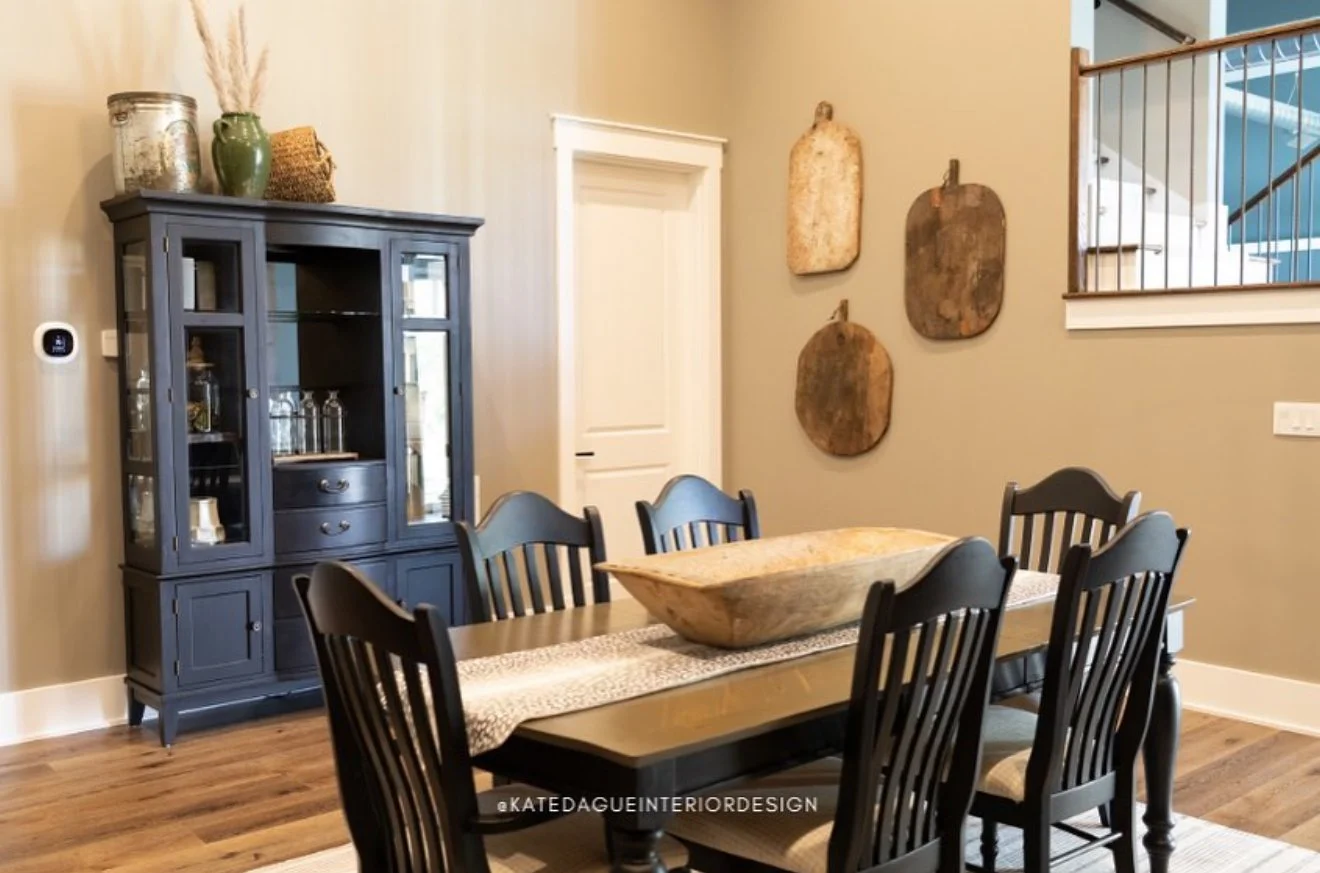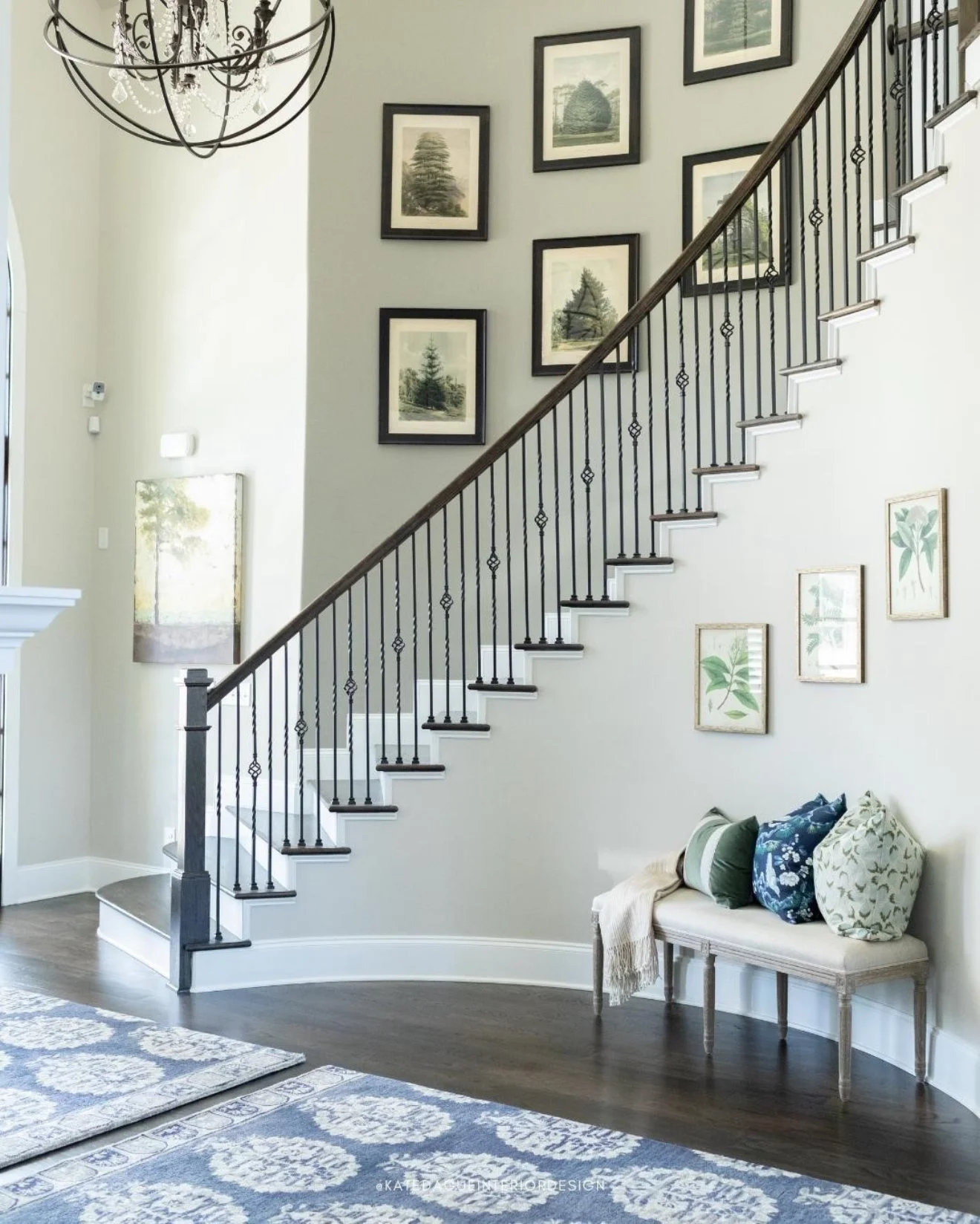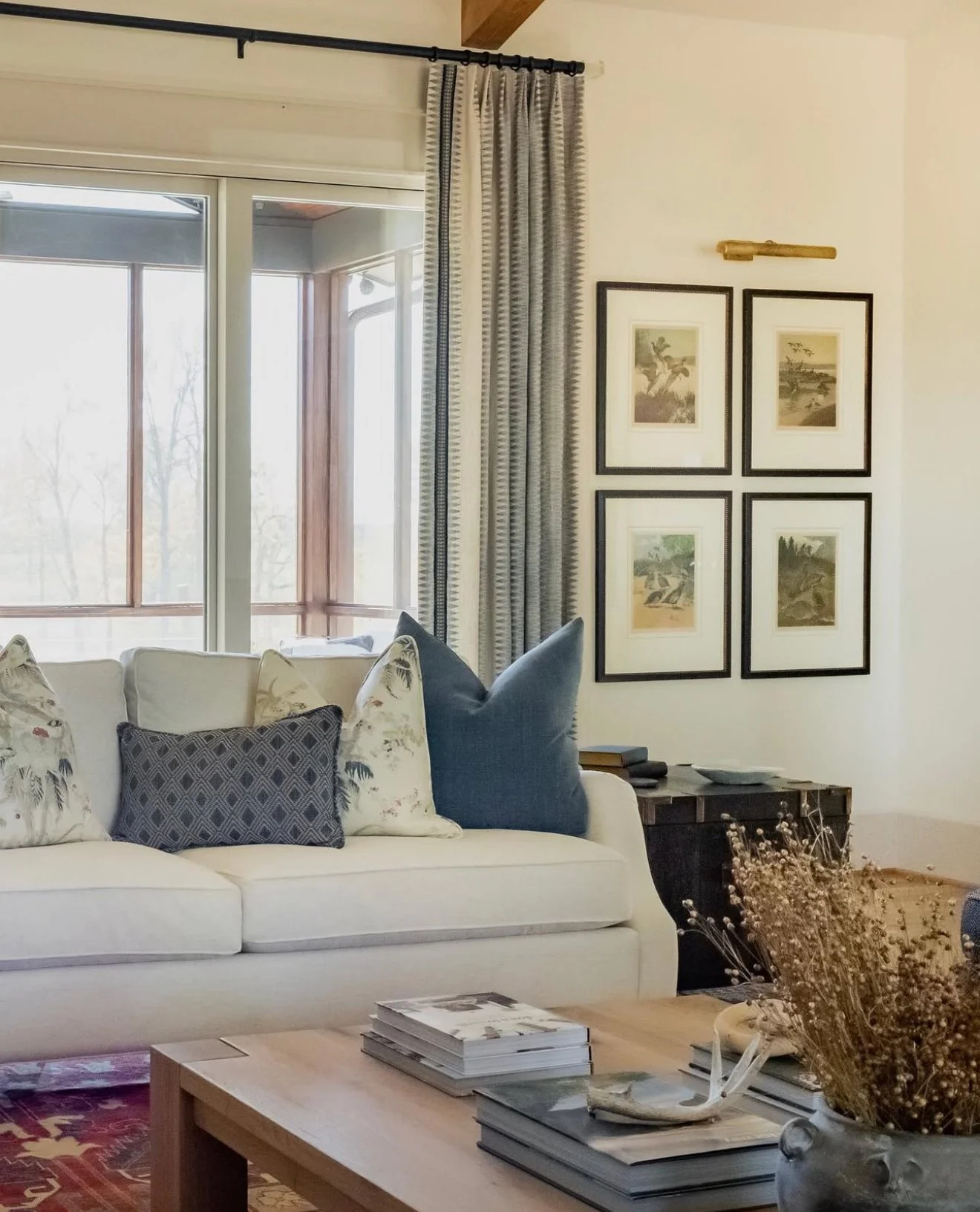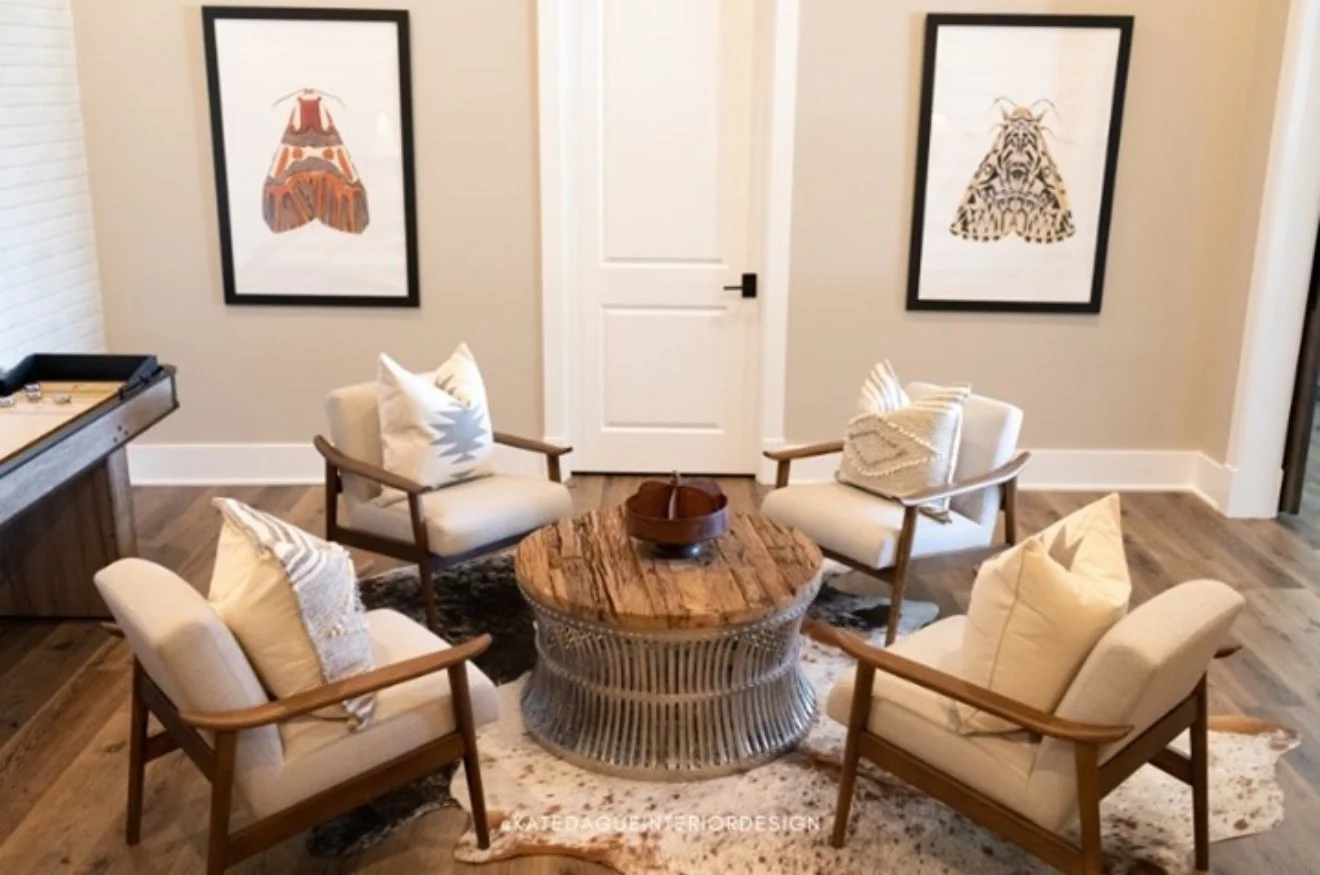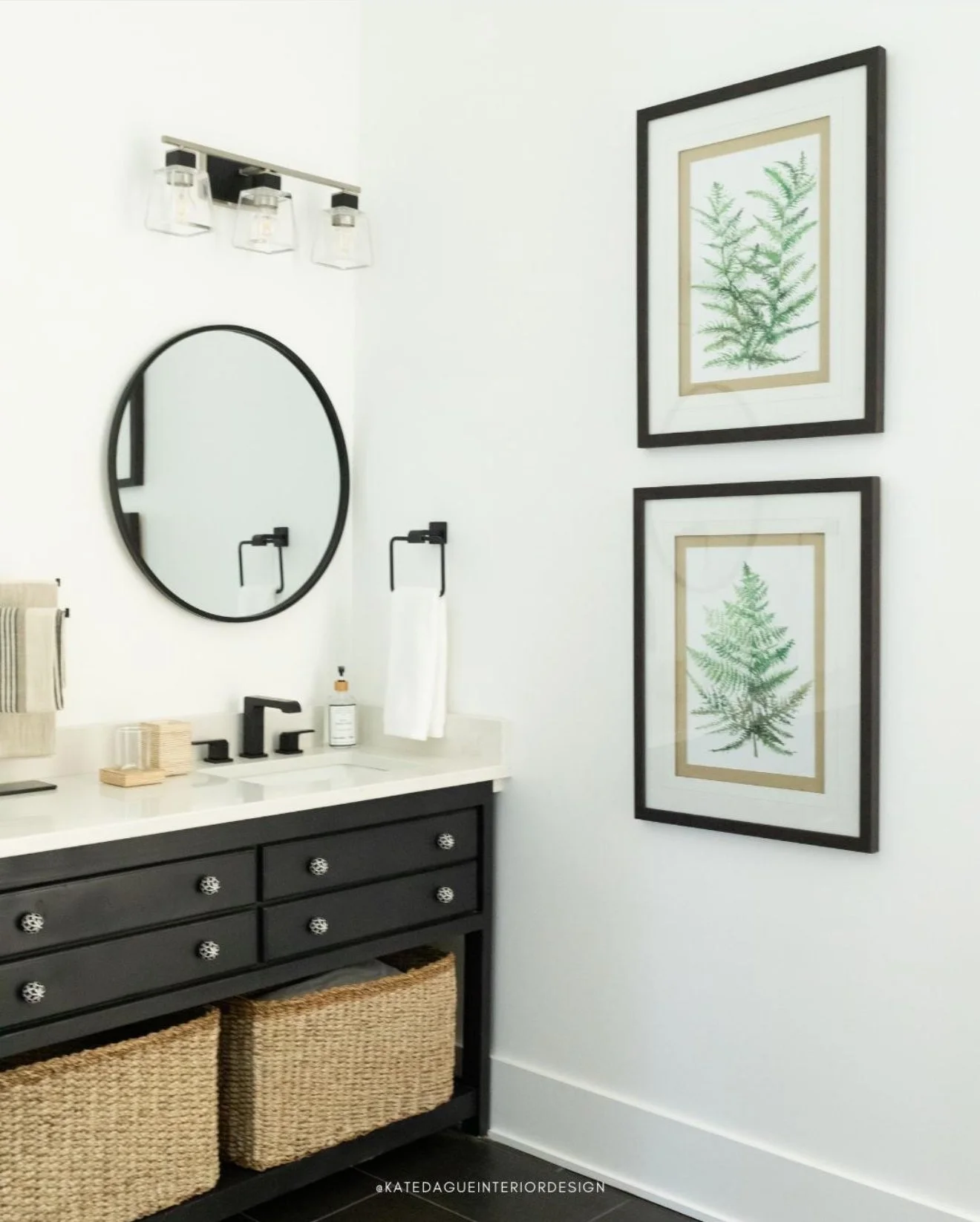Why Hanging Art Feels So Hard (And Why You’re Not Alone)
If you’ve ever stood staring at a blank wall while holding a beautiful print in your hand—and then walked away not knowing what to do next—you’re in good company. Hanging art can feel oddly intimidating. For something that’s supposed to bring joy and personality into our homes, it has a way of sparking anxiety instead.
Here’s the thing: it’s really about the fear of getting it wrong. What if it’s too high? What if it clashes with the sofa? What if your friend with the perfect Instagram house sees it and silently judges your gallery wall? (Spoiler: they won’t. And if they do, they’re not your people.)
Many of us hesitate because we’re waiting for the “perfect” arrangement, the “right” frame, the “finished” living room. But homes aren’t showrooms. They’re living, evolving spaces. And art isn’t a test you pass or fail. It’s a reflection of you.
Sometimes the hesitation runs even deeper. Maybe you don’t feel like your home is “styled enough” for real art. Or maybe you think art belongs in fancy homes with high ceilings and portrait lighting. But the truth is, every home deserves beauty, whether it’s a cozy den or a sprawling modern space. And more importantly, you deserve to be surrounded by things that inspire you.
So if you’ve been waiting for permission to start hanging things—here it is. Start with one piece. One wall. One moment of bravery. The rest will come.
1. The Basics: How High, How Much, and How to Hang
So you’ve decided to hang something. This is where many people get stuck, but don’t worry! These are guidelines, not laws. You can absolutely bend the rules to fit your style, your space, and your comfort level.
How High Should I Hang It?
There’s a simple rule we designers often follow: hang art so the center is around 58-62 inches from the floor. That’s roughly eye level for most people, and it helps your art feel grounded in the space rather than floating too high or too low. Most people tend to hang their art too high (especially if they have high ceilings). I encourage you to hang your art at eye level. It creates a cozier, cohesive space.
Place your furniture first so you know where each piece of art is needed. You can create a vignette with furniture and art so they flow together.
How Much Art is Too Much?
This depends on your space and your personality. A minimalist might love one oversized piece making a quiet statement. A maximalist? Bring on the gallery wall. The key is balance.
2. Making Art Flow with Your Decor
Art should complement the surrounding decor as well as your life. When it’s right, it doesn’t just decorate, it elevates, telling your story the way nothing else can. It speaks the same language as the rest of your decor, while still adding something uniquely expressive.
Start with the Space Itself
Before hanging art, evaluate your room’s composition. Is it calm and neutral? Bright and eclectic? Moody and dramatic? Your art can echo that mood—or add a counterpoint.
• In a minimalist space, bold abstract art can inject personality without clutter.
• In a colorful, busy room, simple line drawings or black-and-white photography can offer balance.
• In a cozy or rustic space, try botanicals, bold landscape paintings, or textured pieces like textiles.
Use Color to Tie Things Together
You don’t have to match your art to your pillows, but pulling a few tones from your space can help everything feel intentional.
• Echo accent colors from rugs, throws or draperies.
• Don’t be afraid to repeat shades across different pieces—it creates visual harmony.
• Neutral palette? Great! Let the art pop.
Think Beyond Paintings
Art doesn’t have to be paintings. Consider:
• Framed textiles or wallpaper swatches
• Vintage cutting boards or book pages
• Shadow boxes with meaningful objects
• Mirrors, baskets, or sculptural wall pieces
3. Mixing Styles: How to Tie Different Types of Art Together
“None of my pieces match.” They don’t have to! In fact, some of the most visually interesting homes feature a mix of art styles that somehow just work together.
The secret? It’s not about matching—it’s about connecting.
Find a Common Thread
When mixing styles, look for one or two elements that can carry through the whole collection:
• Color palette: even wildly different pieces feel cohesive if they share a few key colors.
• Consistent framing style: white mats or black frames can tie a gallery wall together.
• Theme: maybe everything is travel-related, nature-inspired, or personal photos.
Everything doesn’t need to match—but they should have a conversation.
Pair Opposites for Excitement
• Abstract art next to photography
• Bold prints alongside delicate pencil sketches
• Contemporary pieces next to vintage finds
These contrasts can make each piece stand out more—and keep your walls from feeling one-note.
Use Layout as a Unifier
Arranging art in a clean grid or a structured gallery wall helps create a sense of order.
• For a gallery wall, place your boldest piece center to anchor the arrangement.
• A structured, even grouping of stacked art can almost give the sense of a piece of furniture to give weight to a specific area in a room.
• Trust your eye. If something feels off, it probably is—but that also means you can fix it.
Tell Your Story
At the end of the day, your home is not a museum—it’s your story. The vintage postcard from your trip to Italy deserves a spot next to that modern art print you fell in love with. The sketch your child made might look perfect in a nice frame next to a flea-market find.
Mixing styles isn’t a design faux pas—it’s how you show the layers of your life.
4. From Fear to Fun: Trusting Your Eye
Here’s the truth no one tells you: there is no “right” way to hang art. There’s no certification or secret formula. It’s not about following rigid rules, it’s about trusting your eye, and more importantly, trusting your taste.
Start Small and Build
You don’t need to hang an entire gallery wall in one afternoon. Start with a single piece you love. Hang it where you’ll see it every day. See how it feels. Let that feeling guide the next one.
• If you’re not sure, use painter’s tape or paper templates to test the layout.
• Live with your arrangement for a day or two before committing.
• I often lay the pattern out on the floor, double check my measurements, take a photo, then start hanging the art from the center out, up and down.
You’re Allowed to Change Your Mind
Don’t let fear of “getting it wrong” keep you from trying. You can always patch a hole, move a frame, or swap pieces around.
Hang what you love, how you love it. The only wrong choice is leaving your walls blank because you’re scared to start.
Conclusion: Your Home, Your Story—
One Piece at a Time
Hanging art doesn’t have to be scary. It’s not about perfection—it’s about expression and making your home feel like you.
So go ahead! Grab that hammer and that piece of art that’s been leaning against the wall for six months. Your home deserves to be filled with art you love. And so do you.
If you’re still feeling overwhelmed or you want to bring your vision to life with confidence, working with an experienced interior designer can make all the difference. A designer can help you figure out how to tie your art into the rest of your decor, effortlessly mix styles, and create a space that feels both cohesive and completely you.
You don’t have to do it all alone. We at Kate Dague Interiors can hang your existing art and even help you discover art that you love.
Live Beautifully,
Kate
From consultations to full-service turn key interior design, we bring elevated interiors to life - beautifully and seamlessly.
As always, we at Kate Dague Interiors greatly appreciate your referrals of prospective clients.
Prospective clients can contact us on our webpage or email us at: kate@katedagueinteriors.com katelynn@katedagueinteriors.com
“Art isn’t a test you pass or fail. It’s a reflection of you.”
“Hang art so the center is around 58-62 inches from the floor . . . that’s roughly eye level for most people.”
Pro tip: If you’re hanging art above a piece of furniture (like a sofa or console), keep the bottom of the frame approximately 3-14 inches above the furniture. It should feel connected, not like it’s drifting away.
“In a minimalist space, bold abstract art can inject personality without clutter.”
“In a cozy or rustic space, try botanicals, bold landscape paintings, or textured pieces like textiles.”
“Art doesn’t have to be paintings.”
“Vintage cutting boards…”
“Everything doesn’t need to match—but they should have a conversation.”
“A structured, even grouping of stacked art can almost give the sense of a piece of furniture to give weight to a specific area in a room.”
“It’s not about following rigid rules…”
“The only wrong choice is leaving your walls blank because you’re scared to start.”


